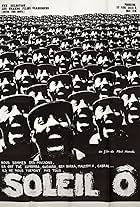This film is inspired by Howard Zinn's landmark book, "A People's History of the United States", which reframes United States History away from the traditional nationalistic celebration, towards an examination of economic, racial and gender inequities as well as healthcare, land management and labor rights. In doing so, Zinn brings to the fore a range of stories and people who had previously been ignored or under-appreciated. John Gianvito brings that complex work to the screen via images of the many, often obscure, physical monuments that celebrate or commemorate those people and stories. There is no narration and very limited written titles, rather the audience is asked to observe the monuments (often gravestones), read the inscriptions on them, and consider the environments in which they are located. The experience is divisive, tragic that many atrocities occurred, uplifting that people stood strongly against oppression and inequity, then tragic again that such people are rarely celebrated. Some viewers may be frustrated that the background details to the images are not provided, in many ways the audience needs to read Zinn's book to fully appreciate the film, but even for those unfamiliar with the details will be able to appreciate overall mood and message of this quietly emotional film.








